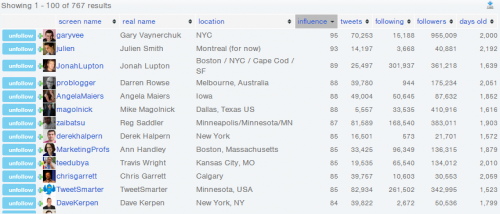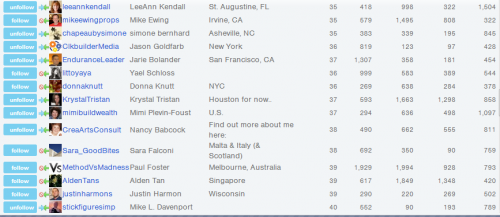by
Adam Costa

The #1 Mistake Bloggers Make Which Kills Results and Slashes Productivity
Iâm afraid this message might upset you.
Why? Because it exposes the number one mistake content marketer are making right now, and will continue to do so for years to come.
But I donât want to alarm you. This problem can be solved.
Better still, understanding this problem will force you to rethink your whole content strategy. In a good way. Youâll view your content in a radically new framework, one that even the largest publishers havenât caught on to⦠yet.
The following story will illustrate what I meanâ¦
It began with an argument.
Over a bottle of Veuve Clique, my beautiful strong-willed wife and I discussed what our new travel site should be.
My point of view went something like this:
âWe should build a large, content-driven site about exciting destinations around the world. Then we can include traveler reviews, maps and even a forum where they can share their best tips! What do you think, huh, baby?
Darcie, swirling her champagne, coolly asked:
âSo you wanna be Lonely Planet?â
âUm⦠no. Well⦠maybe like Lonely Planet but⦠you know, better.â
âSo how will we be better?â
âWell⦠our content will be better.â
âHow?â
âUmmmâ¦â
âAnd what about size? How will we compete with a site that has hundreds of thousands of pages?
âWellâ¦â
The conversation declined from there.
And let me tell youâ¦
It was one of the hardest discussions of my life.
My wife Darcie always asks the hard questions. Iâm glad she does⦠because I never do. Iâd rather just charge through an idea, without asking how and why it will be different, better, etc.
Sure, we could compete on quality (and I truly think we do) but we could never compete on quantity⦠the big boys operate at a scale we canât even imagine.
And the sad fact is, a quality site with 1,000 pages is not as valuable as another site with 100,000 pages of equally valuable content.
It was time to change the conversationâ¦
⦠from âhow can we match the competitionâs content in terms of quantity and qualityâ to âhow can we organize our content to make it more valuable to our users?â
This is a subtle difference.
The first question concerns the content itself⦠while the second adds the delivery of that content into the conversation.
In other words, we realized âquality contentâ was just the beginning.
We had to package it differently.
Quantity x Quality x Organization = Value
Quality is still the most important factor here. But the quantity and organization of valuable content is more important than ever.
Letâs use two sites as an example.
Site A has fifty pages of quality content.
Site B has five thousand pages of equally valuable content.
Which is more valuable?
The answer is⦠it depends.
If those five thousand pages are buried deep into the site, with no discernible way to access it, their value plummets.
In fact, if no one can find it, their value disappears.
Now letâs look at the fifty page site. If there are ten categories â each with five pages of content â then every single page is easily found.
Let me say that again. Every page is valuable.
Relying Solely On New Content Is A Foolâs Errand
Itâs short-sighted, and fails to take full advantage of your existing content.
How to Make It Stupidly Easy for Readers to Love You
Blogs are excellent at displaying new content⦠but theyâre notoriously bad at showcasing old content.
Remember that gem you wrote three months ago? Gone. Buried deep into your archives, where only a lucky few will stumble on it ever again. Or what about that post you wrote last year or (gasp!) back in 2006? Itâs still valuable today, but who will ever find it?
Therefore, you need to make your existing content as accessible as your new content.
How to Better Organize Your Content (and Boost Revenue)
Use Taxonomies. Taxonomy is a fancy word for âorganization.â Itâs also what separates your average website with a truly great one.
Letâs use a simple example.
Letâs say youâve got a website that reviews food and restaurants in San Francisco. Sushi, vegetarian, tapas⦠whatever.
Now you could organize the site by types of food: Chinese, Japanese, Mexican, etc.
Good. But what about location? Maybe I want Chinese food in specific neighborhood (Castro or Chinatown).
With a traditional category system, you canât simultaneously search for two different categories (âChineseâ AND âChinatownâ) which makes it harder for the reader to find the content they want.
Thatâs where taxonomies come in. By creating two different taxonomies (e.g. âNeighborhoodâ and âCuisineâ) your readers can easily find the best Chinese restaurants in Chinatown.
Great. But letâs take this further.
Instead of two taxonomies, letâs add a third one for time of day (e.g. âbreakfast, lunch or dinnerâ). Now your reader can find the best Chinese restaurant in Chinatown for lunch.
Pretty cool, right?
Can you see how much more valuable this site is? How changing one aspect of the site drastically improves the user experience? Just think how you could use this simple method to help readers find your content which is most valuable to them⦠why wouldnât you want to do this?
Create âResourceâ pages. Note: Here’s an excellent example to start with.
Chances are, your readers donât care about all of your content. Sure, they may be in love with some of it⦠but the rest?
Meh.
Now instead of creating mere âcategoryâ pages which list all your articles (who actually reads those, anyways?) you create valuable âresourceâ pages which target your readerâs specific interest.
For example, someone visits your website about San Francisco food. At the top of the blog you list the major resources people would be interested in: letâs use neighborhoods. So when someone clicks on âNorth Beachâ they go to a resource page which says something like this:
âThe Ultimate Guide to North Beach Dining!â
North Beach is well known for Italian cuisine: family-owned delis serve cured meats and stuffed olives alongside gelato stores and bakeries, while the smell of roasted garlic wafts down Columbus Ave.
Here are 5 â 10 in-depth resources which highlight the best North Beach has to offer:
LINKS #1 â 5
Want to learn more about North Beach? Then grab our free eBook on North Beachâs best restaurants.
Youâll learn:
5 âto-die-forâ restaurants no one knows about (yet).
A simple trick to save 20% on your next dinner.
7 delicious deserts⦠and the perfect wine for each.Thereâs even a complete walking tour for âfoodiesâ which showcases top restaurants in North Beach â along with a history of the neighborhood â and personal menu recommendations for each. You can grab this report by filling out the form belowâ¦
NAME
See What We Just Did?
We made it stupidly easy for readers to find what theyâre looking for. They didnât have to wade through your archives, or (god forbid) use your search bar. They found a lot of useful information, and all they need to do is subscribe to get your best stuff.
Readers get what they need. You get more subscribers. Win/win.
Life or Death
People are catching on to this whole âcontent marketingâ thing. And while everyone else is competing on the quality/quantity angle, do the smart thing and organize your content in a better way.
Trust me, it makes all the difference.
What unique ways could you organize your content? Share your ideas below!
Adam Costa is the co-founder of Trekity.com and Travel Blogger Academy which shows how bloggers can grow their travel blogs traffic.
Thank you for adding to the conversation!






